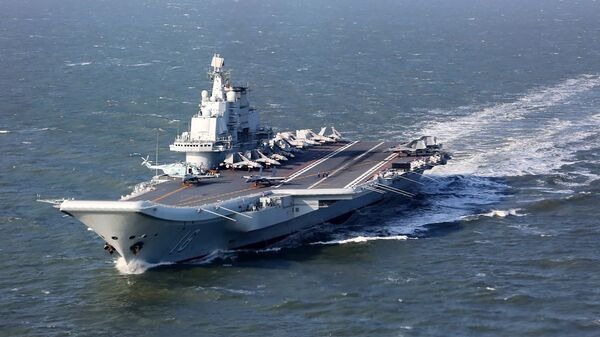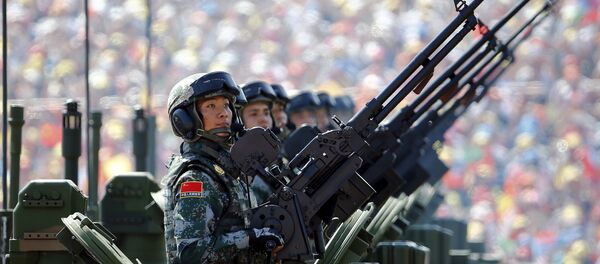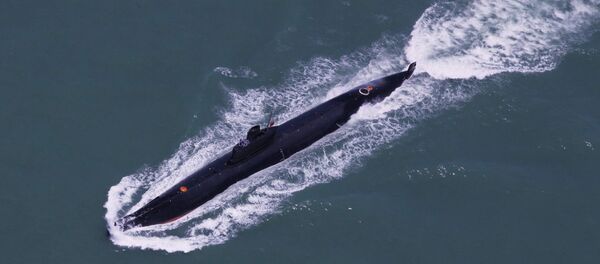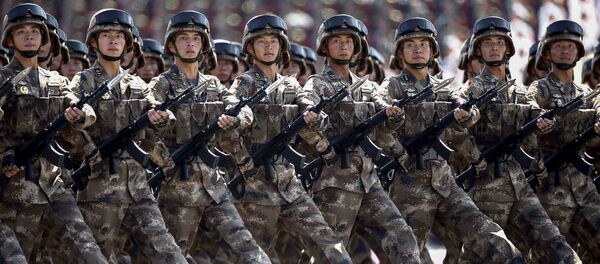"China remains an ocean power and must protect its interests in the seas and oceans. The role of the country's navy will be increasingly visible, and it will boost its capability [in the next few years]," Liu Xiaojiang told journalists after a parliamentary session.
In particular, he pledged to increase China's naval presence in the South China Sea, which he said will become one of the most important regions for Chinese naval operation and that China's navy will respond to the growing threat in the region.
Earlier, NPC spokesperson Fu Ying said that China will increase military expenditures by around seven percent in 2017, in line with its intense military modernization program.
Meanwhile, Lt. Gen. Wang Hongguang, a retired deputy commander of the former Nanjing Military Command, called for a 12 percent increase in the Chinese defense budget, citing US defense spending plans.
"The US defense budget has increased by 10 percent and we need at least a double-digit increase. The most ideal is 12 percent," Wang was quoted as saying by the South China Morning Post newspaper.
In an interview with Sputnik, Russian expert on China Andrey Karneyev shared Liu Xiaojiang's viewpoint on Beijing's concerns about the unstable situation in the South China Sea.
"[China's] attention to the development of its ocean strategy can be explained by both increasing tension in the South China Sea region and Beijing's growing political and economic interests abroad," Karneyev said.
At present, thanks to the adoption of the law on the fight against terrorism, China has already established the necessary framework for the deployment of its troops abroad in order to safeguard the life and property of the civilian population, according to him.
"On the whole, the Chinese navy is already ready to ensure the deployment of a significant number of Chinese forces abroad. The recent military exercises in China indicate that the country's marines are already [being] seen as part of a rapid reaction force that can be used in a variety of geographic areas," he said.
In addition to the development of the aircraft carrier fleet, as well as special facilities to maintain warships and deliver large volumes of cargo to the unequipped coast, China is also becoming technically capable of developing its fleet logistics in remote seas.
#China Likely to Keep Spending More on Its Navyhttps://t.co/9cYRZYu8bW#ChinaNavy #Politics pic.twitter.com/aaZqp1J50f
— AsiaNet Pakistan (@asianet_pak) 28 февраля 2017 г.
In addition to the whole fleet of supply ships of Projects 903 and 905, China is building huge supply vehicles for Project 901 to shore up the fleet's operation in remote areas.
https://t.co/ErgsZX1rOB. #China #Navy #beijing
— Oliver Steward (@Wensumblogger) 1 февраля 2017 г.
Experts say that it is still hard to predict when China will make use of its new military capability. Some argue that all this may take place after the completion of the current series of major military reforms in China by 2020.
Chinese naval aviation has also been seriously modernized. In 2012, China’s first aircraft carrier, the Liaoning, was commissioned. The ship was originally laid down as a Soviet multirole aircraft carrier under the name Riga and then Varyag. China bought it from Ukraine for $25 million.
Currently, Beijing is developing its own aircraft carrier program. By 2020, the Chinese naval forces are expected to receive several domestically-built aircraft carriers.
Never miss a story again — sign up to our Telegram channel and we'll keep you up to speed!





